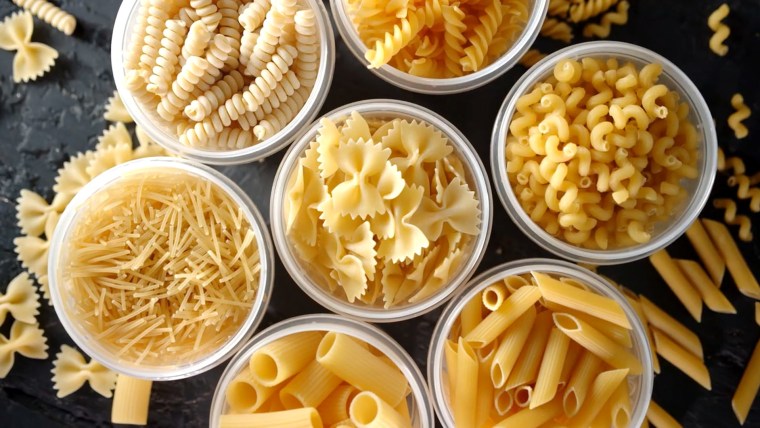Your pasta could get a lot pricier under new tariffs targeting Italian imports — if you can find them at all.
Starting as early as January, U.S. tariff rates on imported pasta from 13 major Italian companies could soar to as high as 107% under a preliminary U.S. Commerce Department decision.
For consumers in the United States, this means the cost of Italian pasta could more than double if the brands decide to pass tariff costs on to retail buyers.
Exporters say the tariffs could effectively bar the targeted Italian companies from selling pasta to U.S. markets.
The tariffs mean that exports of pasta to the U.S. “would be virtually wiped out, erasing years of growth and investment along the entire supply chain,” according to a statement from Coldiretti, one of Italy’s largest agricultural organizations.
The 13 companies include familiar supermarket labels such as Barilla, La Molisana, Garofalo and Rummo.
The preliminary decision issued in September slapped the 13 Italian pasta exporters with a tariff rate of 92%. This would stack on top of the Trump administration’s 15% blanket tariff on exports from the European Union.
The Commerce Department alleges that the pasta companies are “dumping” products in the U.S. at “less than normal value.” The additional tariffs, it says, are necessary to level the playing field with American manufacturers.
The review of Italian pasta makers that resulted in these preliminary tariffs was launched in August 2024 under the Biden administration.
Investigating Italian pasta companies for potential violations of anti-dumping rules is nothing new: The agency has been broadly monitoring the sector since 1996. But the repercussions of this review caught the industry by surprise.
As part of its current assessment, the Commerce Department chose two companies for individual review, La Molisana and Garofalo. It further found the two companies “did not provide information” in response to questions about potential dumping.
As a result, the department applied what it said were the "facts available" and arrived at the additional figure of 92%. That number, the agency said, is "reasonably reflective" of the whole group and therefore will be applied to them all.
“We are being penalized because of 2 other pasta companies’ failure to supply timely and accurate info,” Rummo USA Chief Commercial Officer Jim Donnelly told NBC News, adding that the company denies allegations of undercutting on pricing.
Donnelly said the company would not pull its pasta products, all made in Italy, from U.S. supermarket shelves. But, he said, the company’s pastas, which retail at an average of $3.99, would rise to $6.49 to $7.99 under the higher tariffs.
“We will absorb this until this bad ‘cookie cutter judgment’ is fixed. We are confident the government will see this as a big mistake,” Donnelly said.
Still, the specter of a 107% tariff already has some pasta lovers thinking about alternative plans.
In New York City, chef Salvo Lo Castro said he sells about 200 pounds of pasta a week at his restaurant Casasalvo. From penne to spaghetti to fettuccine, Casasalvo’s menu is nearly all pastas — all at risk of getting two times as expensive for him, and potentially two times as expensive for his customers.
After the tariffs were announced, he stopped buying pasta from Italy, and made the move to make his pasta in house.
“I don’t want to change the price for my guests, it’s very important,” he said, adding that he doesn’t mind the added time of having his staff make it by hand.
For regular consumers, selection at the store could be more expensive if brands raise prices or choose to pull out from the U.S. entirely.
But there will still be options, since some Italian brands produce pasta outside of Italy. Barilla, for example, is one of the 13 companies listed. But it also sells pastas in the U.S. that are made in Avon, New York.
In a statement, Barilla told NBC News that it “is affected” by the preliminary decision by Commerce, and is “evaluating possible initiatives ahead of the final determination next year.”

